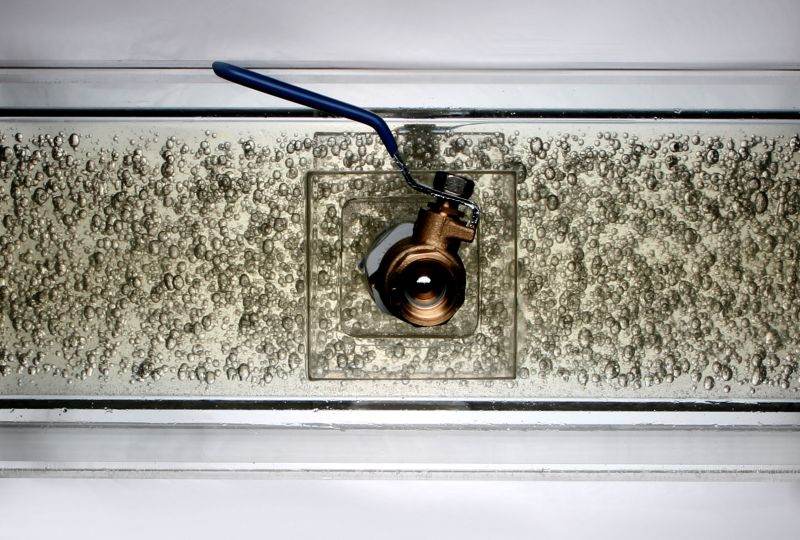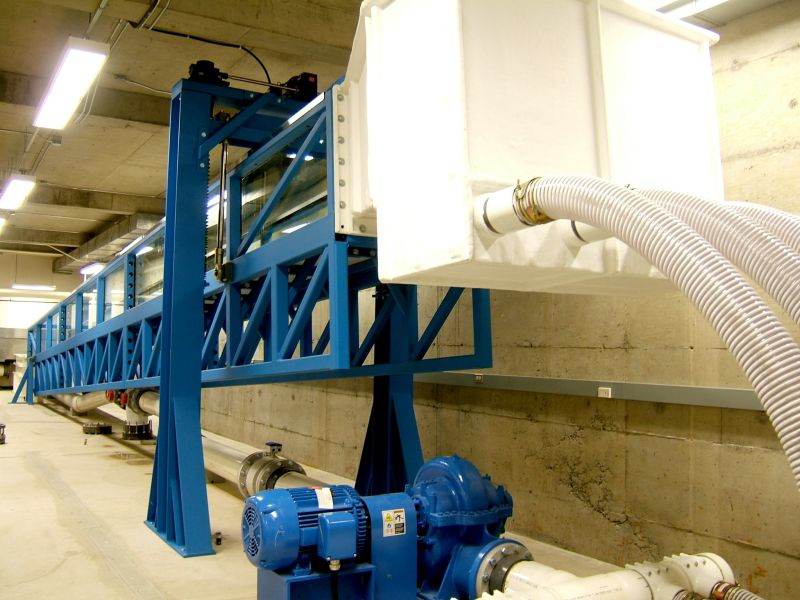Commonplace Occurrence
The transport of mixtures of solids, liquids and gases arguably represent the majority of industrial multiphase flow situations. These mixtures including slurries, foams and emulsions pose complex problems, as the relationship describing the interaction of forces between the various phases must be known to characterize the problem with respect to the parameters of interest, including pressure drop, and flow regime. The challenges are further complicated by inter-phase transport of heat and mass, requiring consideration of the transport equations, thermodynamics, and inter-facial phenomena.
UV reactive dyed oil and water mixture
multiphase flow loop meter array
Two-pronged Attack
Coanda has addressed these multi-phase flow problems, both at steady and unsteady state, through both mathematical means, and through scaled physical modeling. The mathematical approach applied is tailored to the problem at hand, with techniques ranging from one dimensional renderings of the momentum equations, to the complete numerical solution to the equations of motion using computational fluid dynamics (CFD). Many of the multiphase flow problems are associated with the development of new technologies.

oil droplets in water pipe
In the lab, Coanda implements a variety of fit-for-purpose measurement techniques to study the attributes of interest. For instance, laser-based systems can be used to assess distribution and phase velocities. Tracer systems have been developed to quantify residence time distributions that can then be coupled with reaction kinetics to estimate reactor yields.

tilting flume designed to study multiphase river flows
Coanda Experience
Due to the ubiquitous nature of multiphase flow problems, examples of industrial projects that we have tackled are numerous. A small sub-set of these includes:
- Scaled physical modeling of fluidized systems, operating in both fluidized and transport regimes
- One-dimensional modeling of solid/liquid thickening processes, including the retarding effects of effective stress
- Mathematical modeling of two-phase, single component condensing systems
- Gravity separation of both two and three-phase systems, involving gas, liquid, and solids
- Optimization of gas-liquid separators
- Modeling of dispersed flows, with diffusion between the dispersed and continuous phase
- Physical and mathematical modelling of two-phase nozzles, and their associated flow conditioners.
- Pipe flow of non-Newtonian slurries
- Two phase flow behavior through orifices and valves
- Modelling of multiphase systems involving reaction-assisted diffusion.

